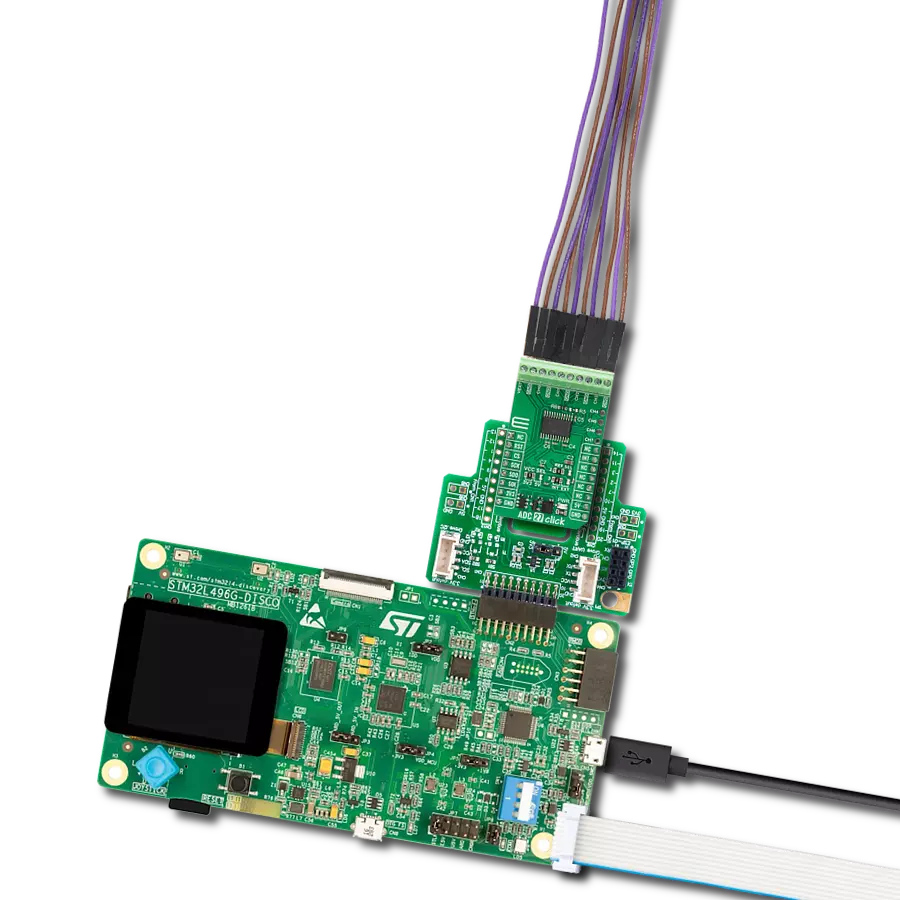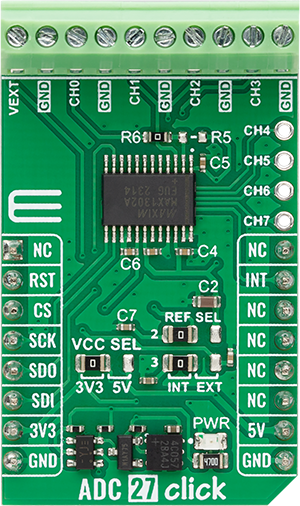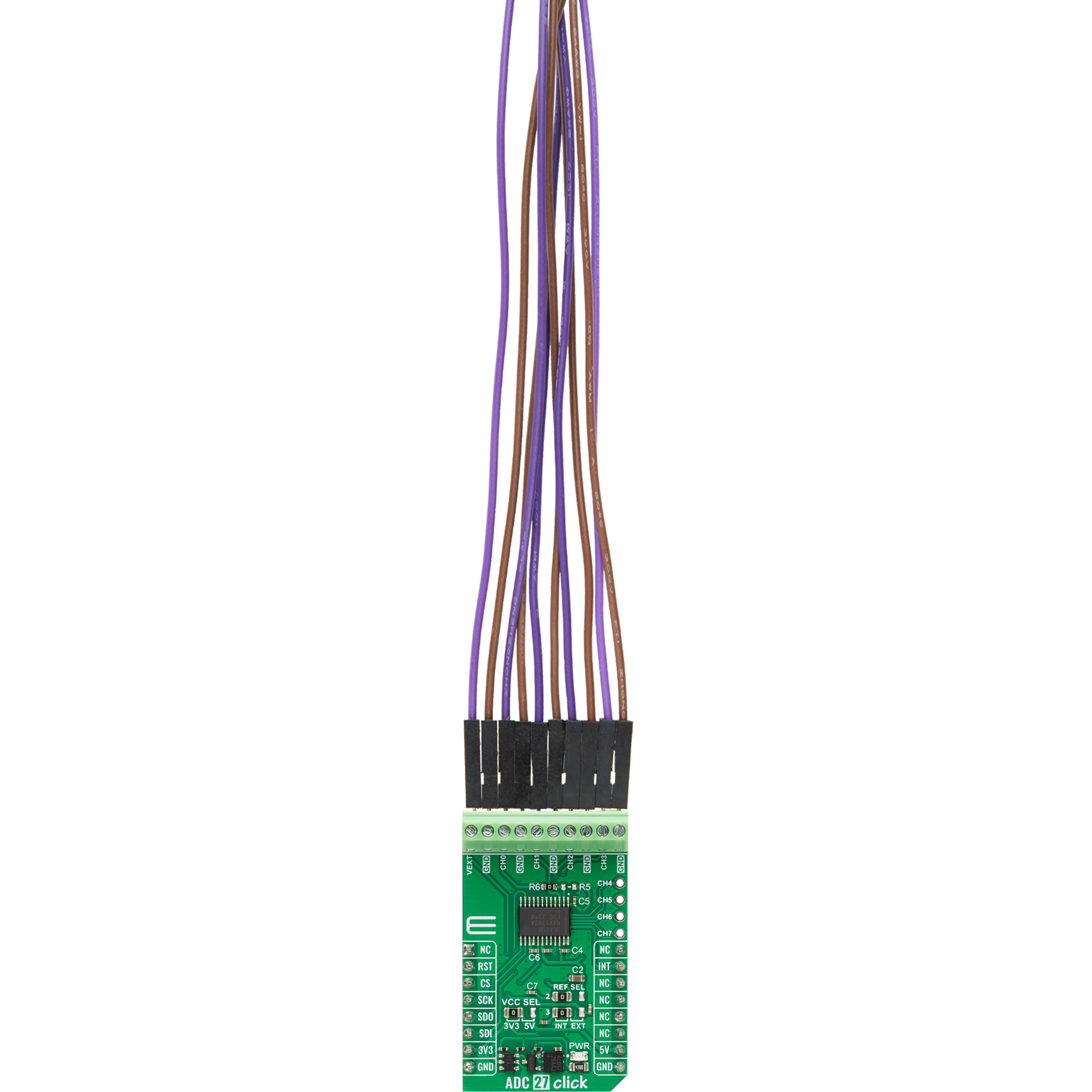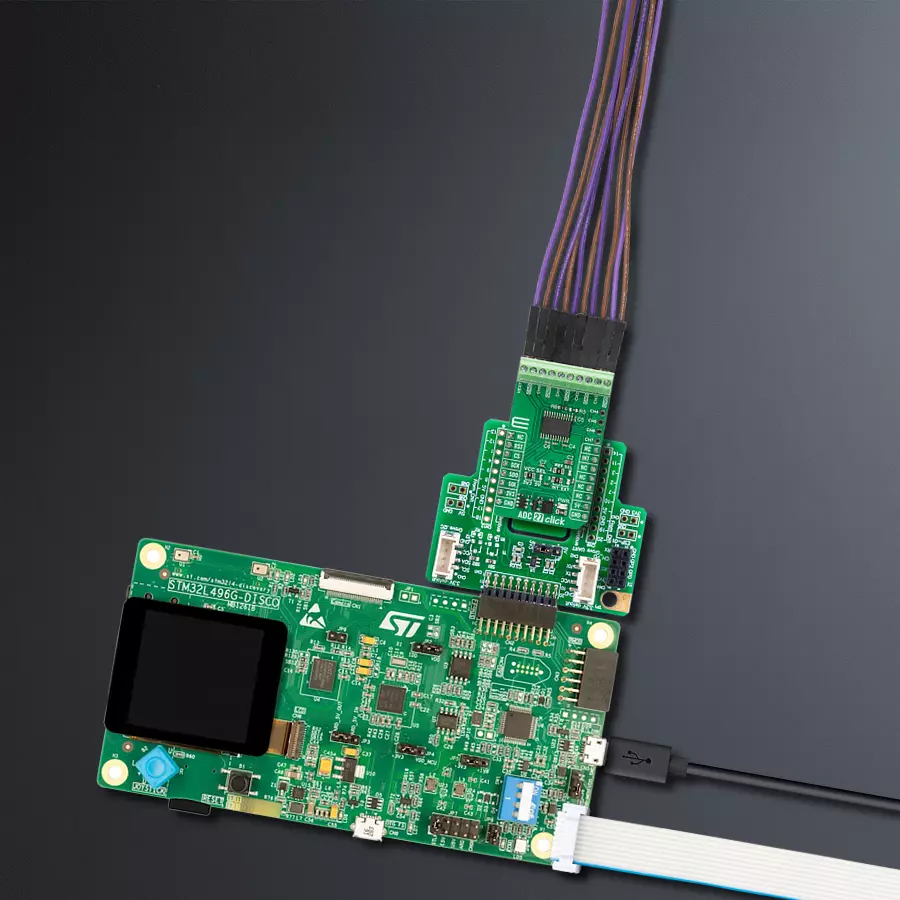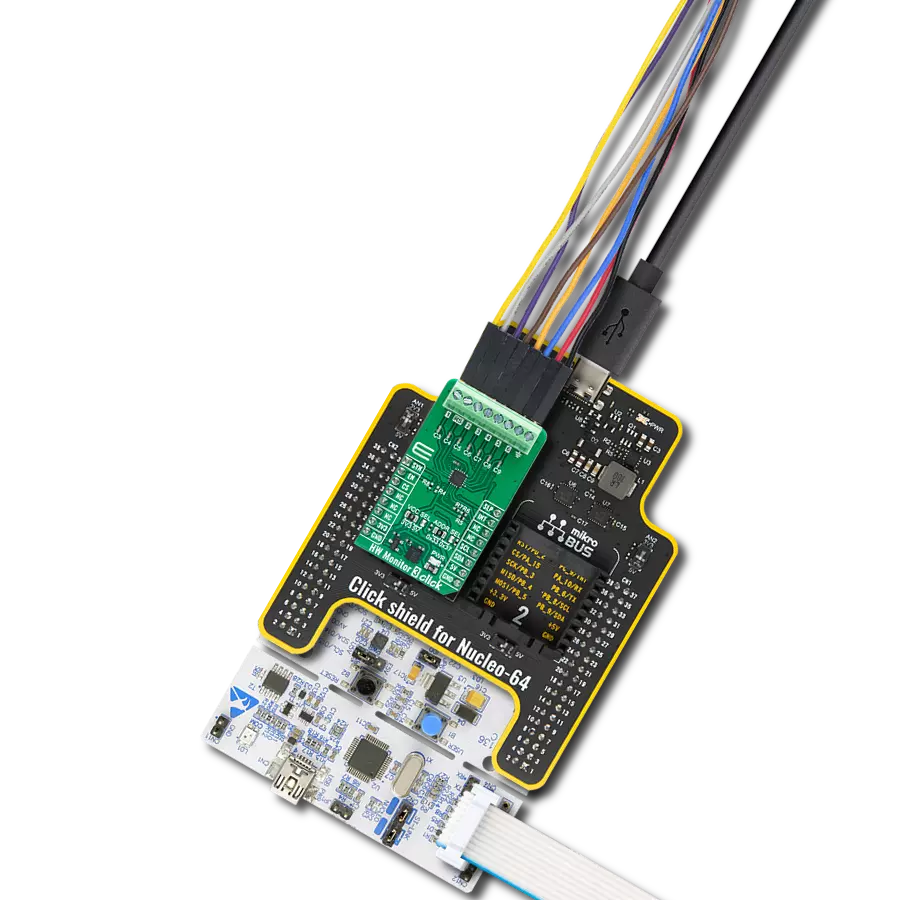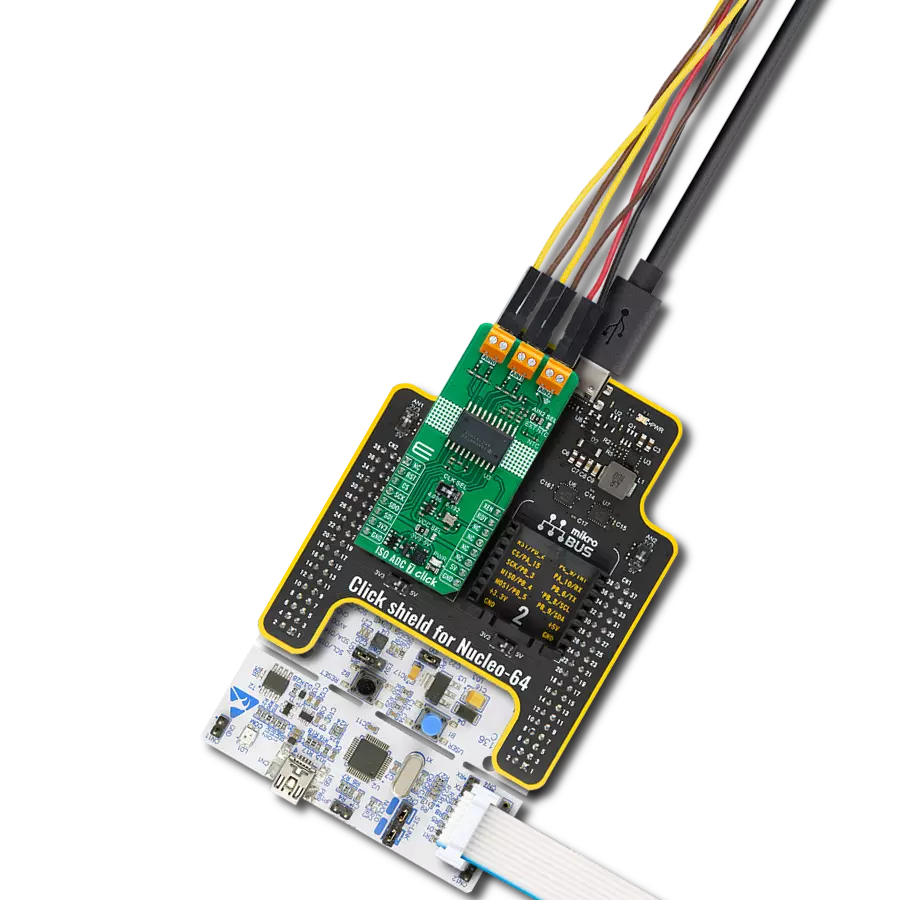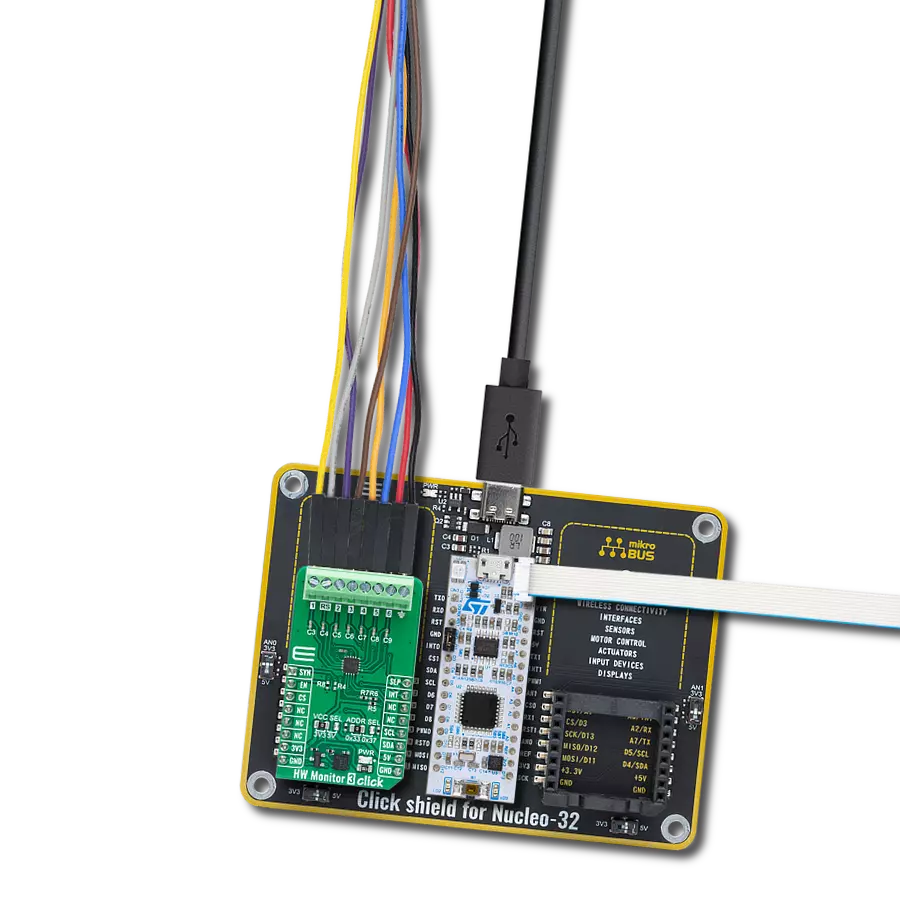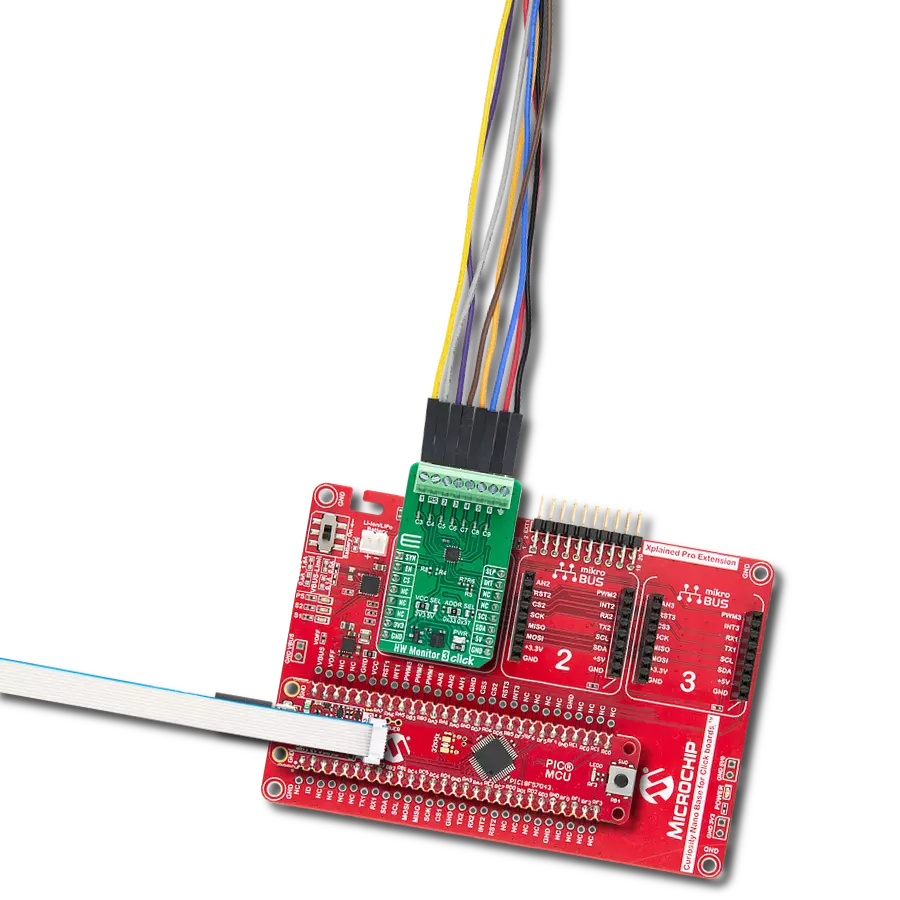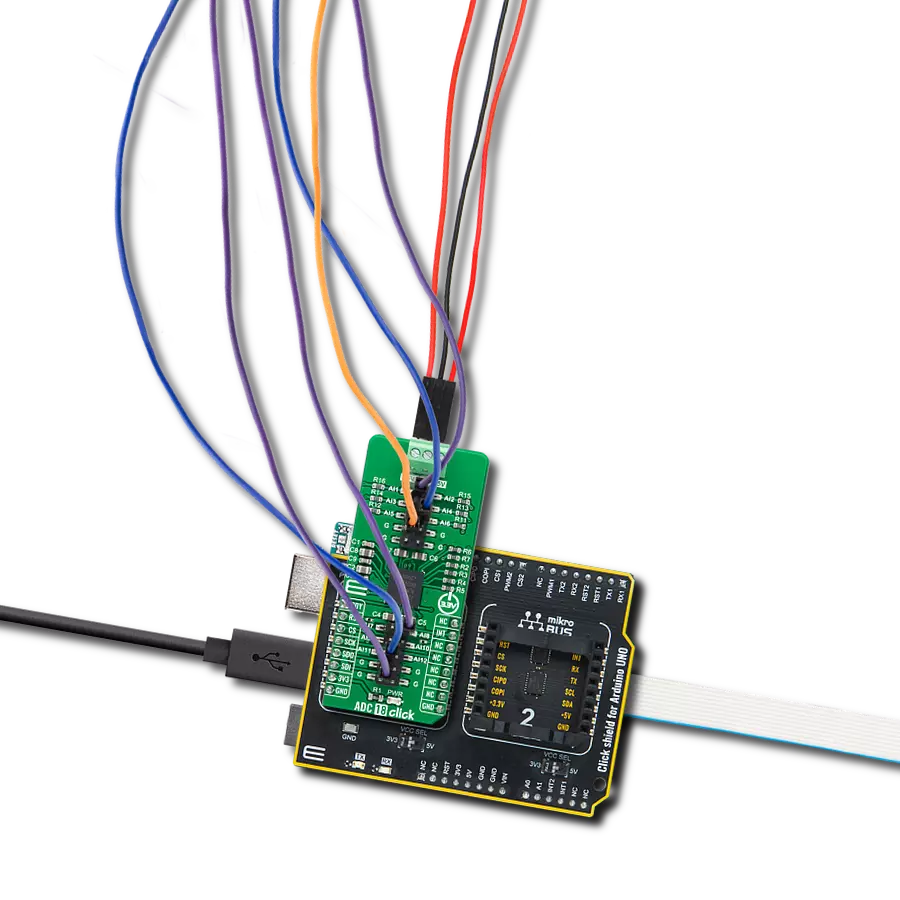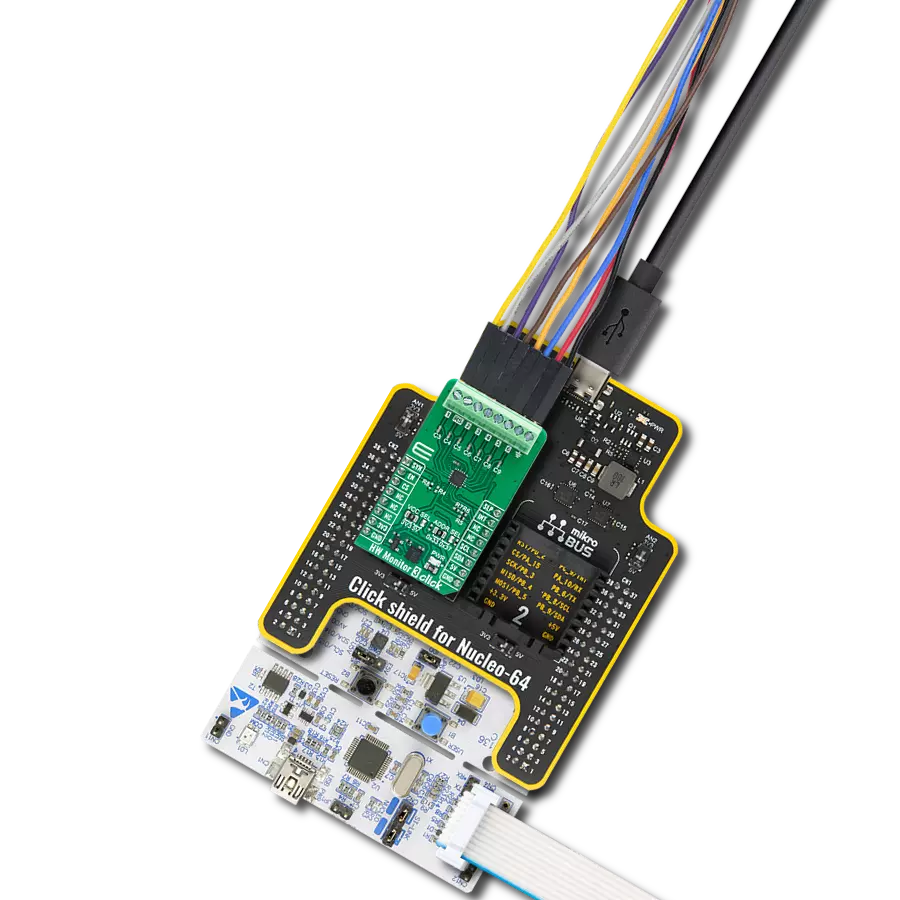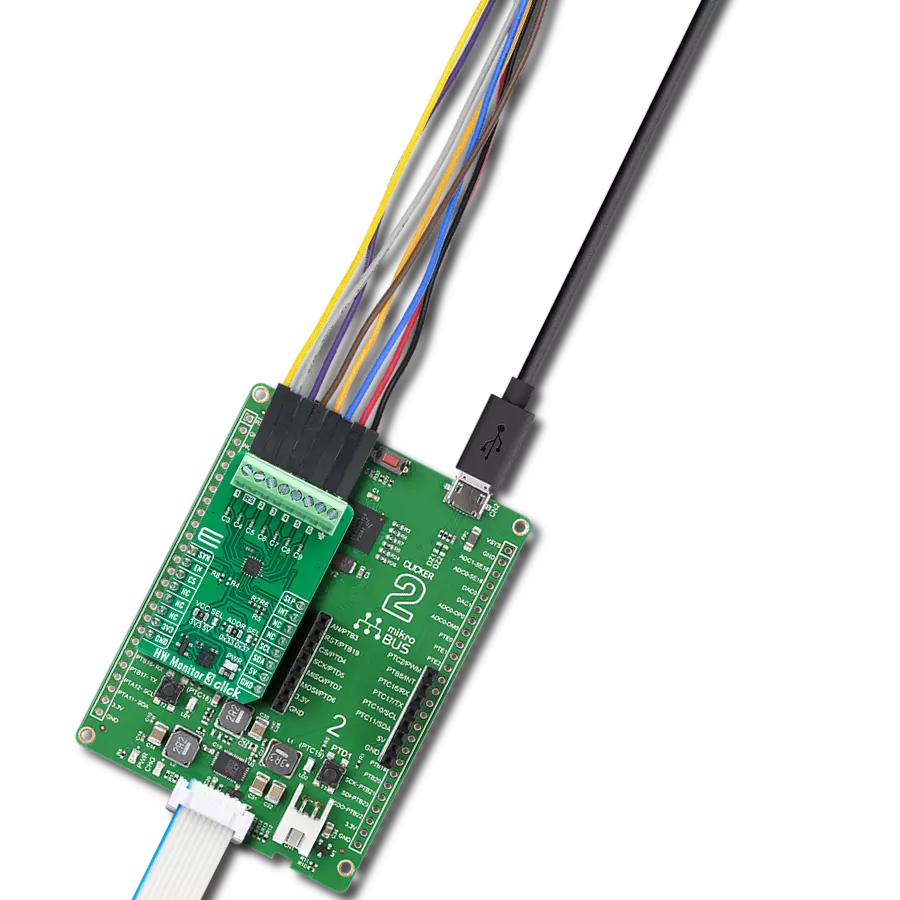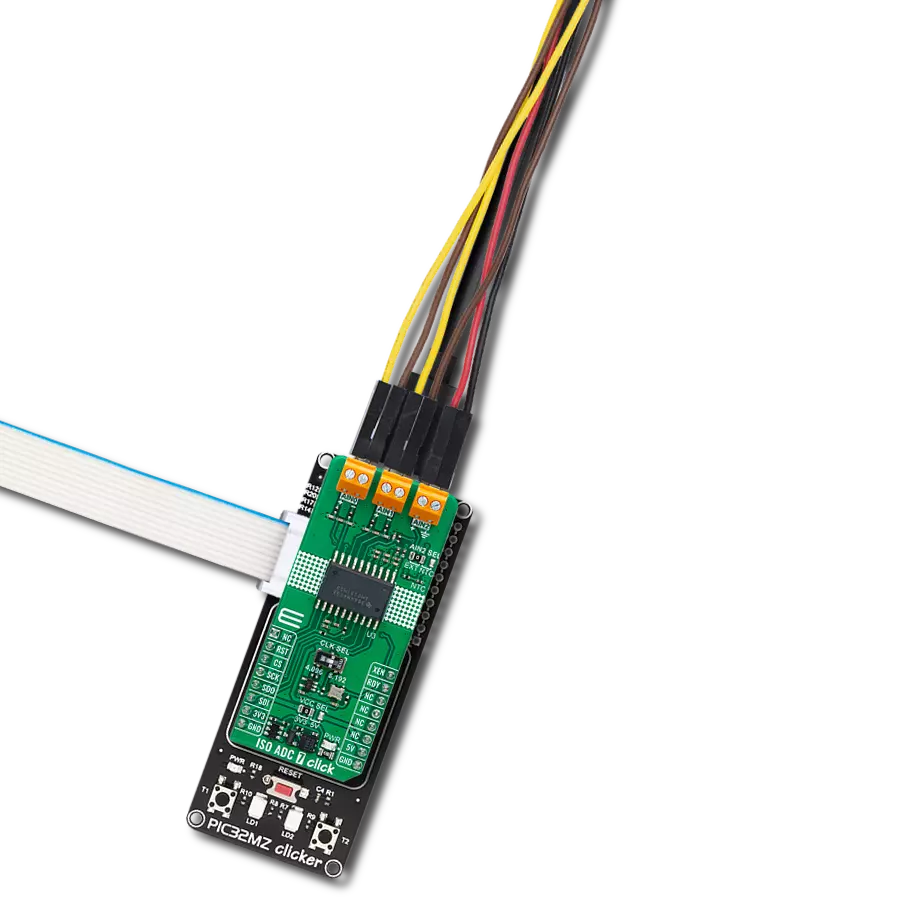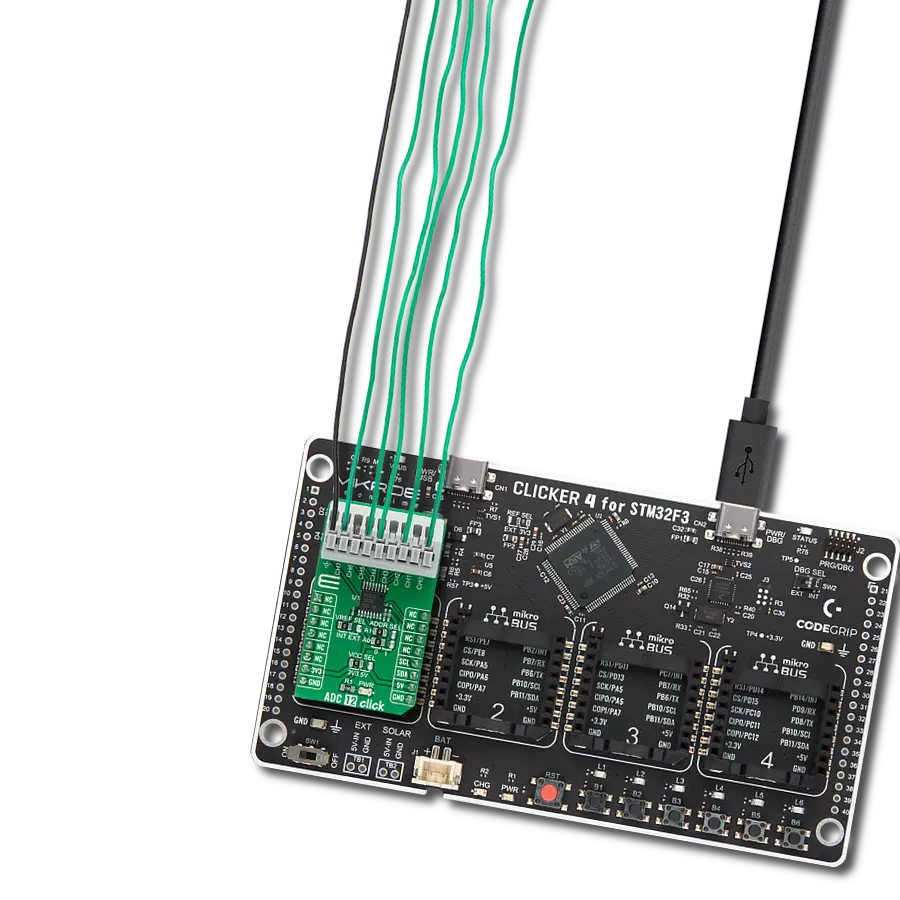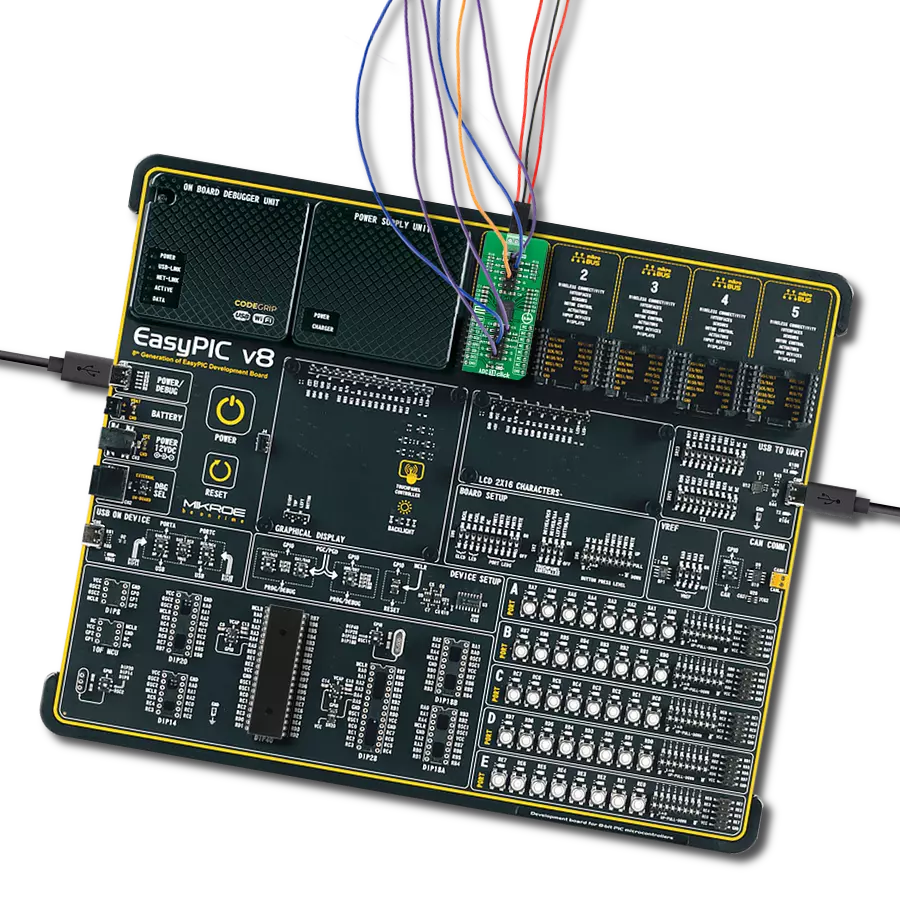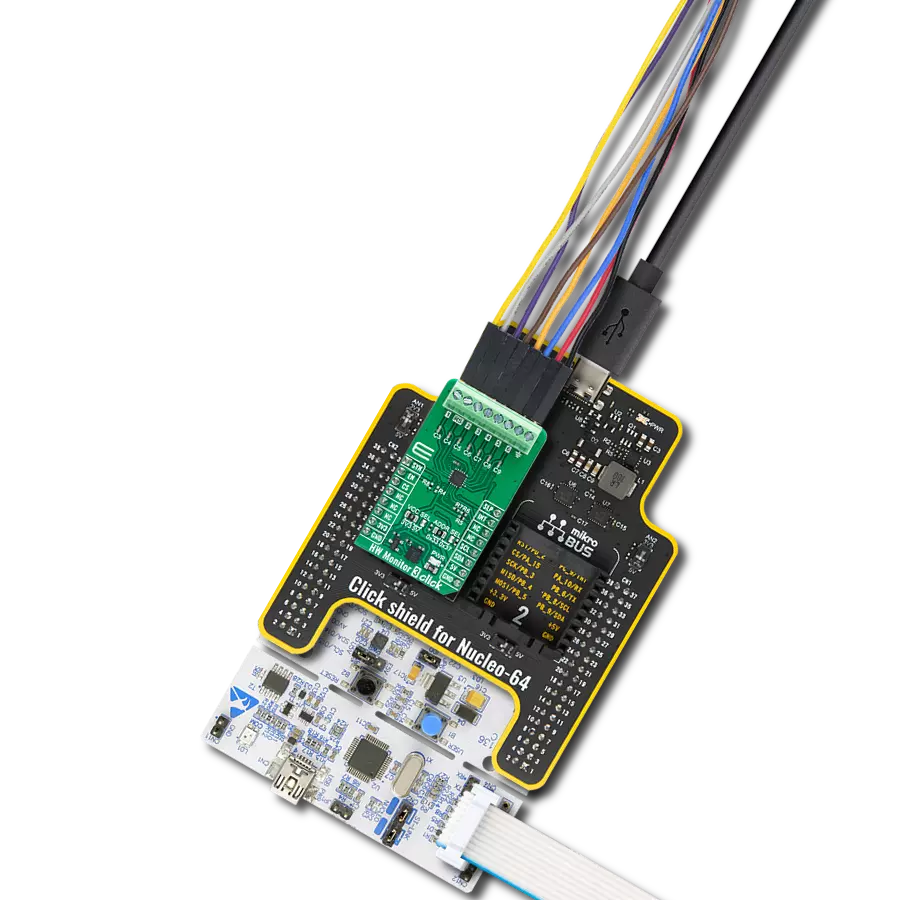Experience high-resolution data acquisition with eight single-ended or four differential input channels
A
A
Hardware Overview
How does it work?
ADC 27 Click is based on the MAX1302, a multirange 16-bit successive-approximation ADC from Analog Devices that supports throughput rates of up to 115ksps and offers remarkable flexibility in analog signal sampling. It communicates with the host MCU via a high-speed SPI-compatible interface, ensuring integration into a wide range of embedded applications. The MAX1302 provides eight single-ended or four true differential analog input channels, each of which can be independently configured in software for various input voltage ranges. Specifically, the single-ended mode supports seven programmable ranges, including 0V to +VREF/2, -VREF/2 to 0V, 0V to +VREF, -VREF to 0V, ±VREF/4, ±VREF/2, and ±VREF, while the
differential mode supports three programmable ranges: ±VREF/2, ±VREF, and ±2×VREF. This enables highly adaptable signal conditioning depending on the application's accuracy and range requirements. The MAX1302 includes an internal precision +4.096V reference voltage, simplifying design. Yet it also allows the use of an external reference voltage between 3.800V and 4.136V for enhanced flexibility, which can be selected by setting the onboard REF SEL jumper to either INT for internal or EXT for external reference. Designed for demanding analog measurement tasks, ADC 27 Click is well-suited for use in industrial monitoring, control systems, data acquisition setups, avionics instrumentation, and robotics, providing robust
performance in environments where accuracy and configurability are essential. In addition to the standard SPI communication pins (SDO, SDI, SCK, and CS), ADC 27 Click also uses an INT pin, which serves as a data-ready indicator. This interrupt pin becomes active when a new conversion result is available, signaling the host MCU that data is ready to be read. This Click board™ can operate with either 3.3V or 5V logic voltage levels selected via the VCC SEL jumper. This way, both 3.3V and 5V capable MCUs can use the communication lines properly. Also, this Click board™ comes equipped with a library containing easy-to-use functions and an example code that can be used as a reference for further development.
Features overview
Development board
The 32L496GDISCOVERY Discovery kit serves as a comprehensive demonstration and development platform for the STM32L496AG microcontroller, featuring an Arm® Cortex®-M4 core. Designed for applications that demand a balance of high performance, advanced graphics, and ultra-low power consumption, this kit enables seamless prototyping for a wide range of embedded solutions. With its innovative energy-efficient
architecture, the STM32L496AG integrates extended RAM and the Chrom-ART Accelerator, enhancing graphics performance while maintaining low power consumption. This makes the kit particularly well-suited for applications involving audio processing, graphical user interfaces, and real-time data acquisition, where energy efficiency is a key requirement. For ease of development, the board includes an onboard ST-LINK/V2-1
debugger/programmer, providing a seamless out-of-the-box experience for loading, debugging, and testing applications without requiring additional hardware. The combination of low power features, enhanced memory capabilities, and built-in debugging tools makes the 32L496GDISCOVERY kit an ideal choice for prototyping advanced embedded systems with state-of-the-art energy efficiency.
Microcontroller Overview
MCU Card / MCU

Architecture
ARM Cortex-M4
MCU Memory (KB)
1024
Silicon Vendor
STMicroelectronics
Pin count
169
RAM (Bytes)
327680
Used MCU Pins
mikroBUS™ mapper
Take a closer look
Click board™ Schematic
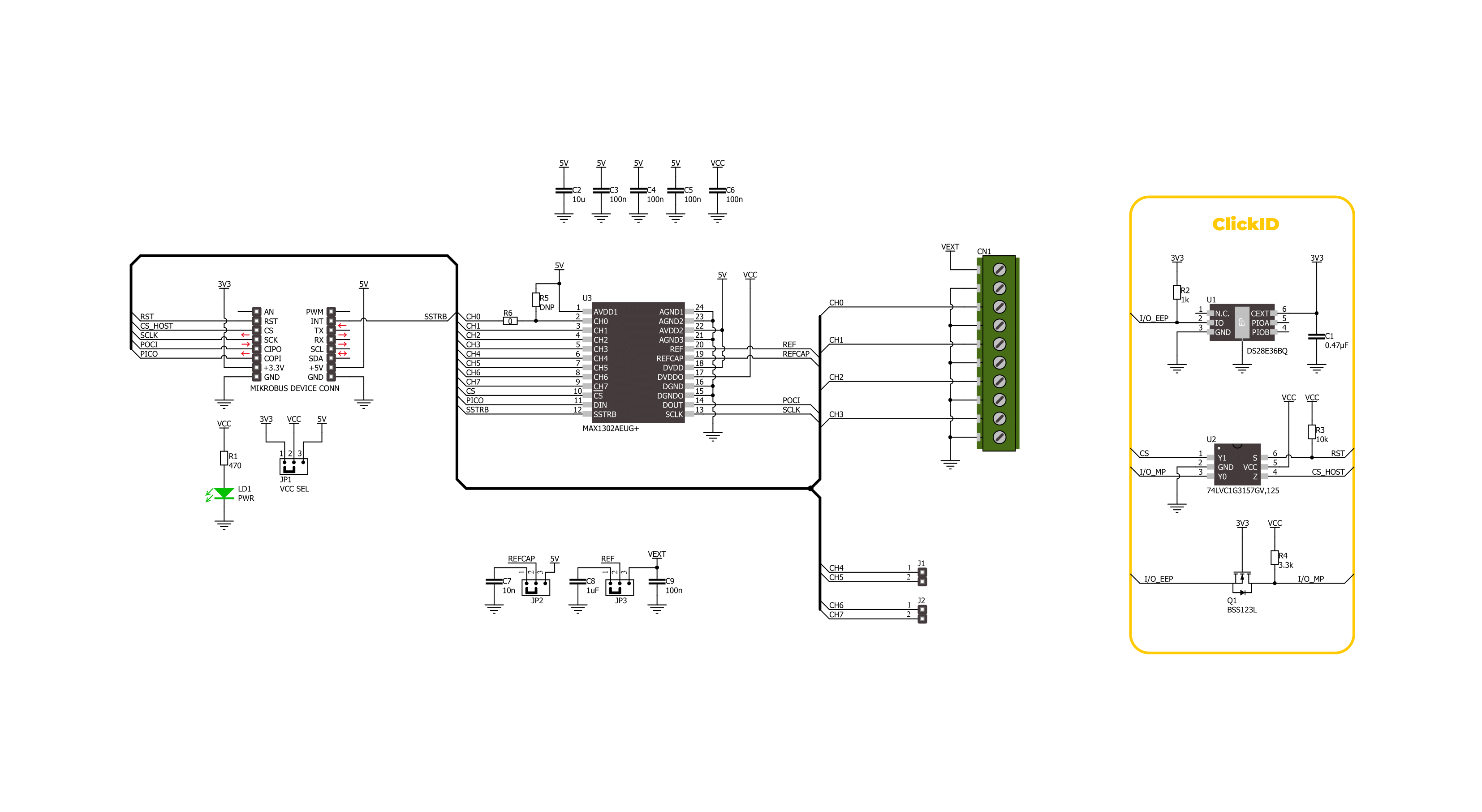
Step by step
Project assembly
Track your results in real time
Application Output
1. Application Output - In Debug mode, the 'Application Output' window enables real-time data monitoring, offering direct insight into execution results. Ensure proper data display by configuring the environment correctly using the provided tutorial.

2. UART Terminal - Use the UART Terminal to monitor data transmission via a USB to UART converter, allowing direct communication between the Click board™ and your development system. Configure the baud rate and other serial settings according to your project's requirements to ensure proper functionality. For step-by-step setup instructions, refer to the provided tutorial.

3. Plot Output - The Plot feature offers a powerful way to visualize real-time sensor data, enabling trend analysis, debugging, and comparison of multiple data points. To set it up correctly, follow the provided tutorial, which includes a step-by-step example of using the Plot feature to display Click board™ readings. To use the Plot feature in your code, use the function: plot(*insert_graph_name*, variable_name);. This is a general format, and it is up to the user to replace 'insert_graph_name' with the actual graph name and 'variable_name' with the parameter to be displayed.

Software Support
Library Description
ADC 27 Click demo application is developed using the NECTO Studio, ensuring compatibility with mikroSDK's open-source libraries and tools. Designed for plug-and-play implementation and testing, the demo is fully compatible with all development, starter, and mikromedia boards featuring a mikroBUS™ socket.
Example Description
This example demonstrates the use of the ADC 27 Click board by reading voltages from multiple analog input channels configured in both single-ended and differential modes. The measured voltage values are displayed via UART.
Key functions:
adc27_cfg_setup- This function initializes Click configuration structure to initial values.adc27_init- This function initializes all necessary pins and peripherals used for this Click board.adc27_default_cfg- This function executes a default configuration of ADC 27 Click board.adc27_set_config- This function sets the configuration for the selected channel of the ADC 27 Click board.adc27_read_raw_data- This function reads raw ADC data from the selected channel.adc27_read_voltage- This function reads the ADC value from the selected channel and converts it to a voltage level using the configured range.
Application Init
Initializes the logger and the ADC 27 Click driver, and performs the default configuration.
Application Task
Reads and logs voltage values from channels CH0-CH3 (single-ended) and CH4/CH5, CH6/CH7 (differential).
Open Source
Code example
The complete application code and a ready-to-use project are available through the NECTO Studio Package Manager for direct installation in the NECTO Studio. The application code can also be found on the MIKROE GitHub account.
/*!
* @file main.c
* @brief ADC 27 Click example
*
* # Description
* This example demonstrates the use of the ADC 27 Click board by reading voltages
* from multiple analog input channels configured in both single-ended and differential modes.
* The measured voltage values are displayed via UART.
*
* The demo application is composed of two sections:
*
* ## Application Init
* Initializes the logger and the ADC 27 Click driver, and performs the default configuration.
*
* ## Application Task
* Reads and logs voltage values from channels CH0-CH3 (single-ended) and CH4/CH5, CH6/CH7 (differential).
*
* @note
* CH0 and CH1 operate with respect to ground and VREF, while CH2 and CH3 provide bipolar inputs.
* Channels CH4/CH5 and CH6/CH7 are differential input pairs. Measurements are taken every second.
*
* @author Stefan Filipovic
*
*/
#include "board.h"
#include "log.h"
#include "adc27.h"
static adc27_t adc27;
static log_t logger;
void application_init ( void )
{
log_cfg_t log_cfg; /**< Logger config object. */
adc27_cfg_t adc27_cfg; /**< Click config object. */
/**
* Logger initialization.
* Default baud rate: 115200
* Default log level: LOG_LEVEL_DEBUG
* @note If USB_UART_RX and USB_UART_TX
* are defined as HAL_PIN_NC, you will
* need to define them manually for log to work.
* See @b LOG_MAP_USB_UART macro definition for detailed explanation.
*/
LOG_MAP_USB_UART( log_cfg );
log_init( &logger, &log_cfg );
log_info( &logger, " Application Init " );
// Click initialization.
adc27_cfg_setup( &adc27_cfg );
ADC27_MAP_MIKROBUS( adc27_cfg, MIKROBUS_1 );
if ( SPI_MASTER_ERROR == adc27_init( &adc27, &adc27_cfg ) )
{
log_error( &logger, " Communication init." );
for ( ; ; );
}
if ( ADC27_ERROR == adc27_default_cfg ( &adc27 ) )
{
log_error( &logger, " Default configuration." );
for ( ; ; );
}
log_info( &logger, " Application Task " );
}
void application_task ( void )
{
float voltage = 0;
if ( ADC27_OK == adc27_read_voltage ( &adc27, ADC27_CONFIG_CH_SGL_0, &voltage ) )
{
log_printf ( &logger, " CH0: %.3f V (gnd,vref/2)\r\n", voltage );
}
if ( ADC27_OK == adc27_read_voltage ( &adc27, ADC27_CONFIG_CH_SGL_1, &voltage ) )
{
log_printf ( &logger, " CH1: %.3f V (gnd,vref)\r\n", voltage );
}
if ( ADC27_OK == adc27_read_voltage ( &adc27, ADC27_CONFIG_CH_SGL_2, &voltage ) )
{
log_printf ( &logger, " CH2: %.3f V (-vref/4,vref/4)\r\n", voltage );
}
if ( ADC27_OK == adc27_read_voltage ( &adc27, ADC27_CONFIG_CH_SGL_3, &voltage ) )
{
log_printf ( &logger, " CH3: %.3f V (-vref/2,vref/2)\r\n", voltage );
}
if ( ADC27_OK == adc27_read_voltage ( &adc27, ADC27_CONFIG_CH_DIF_45, &voltage ) )
{
log_printf ( &logger, " CH4+/CH5-: %.3f V (-vref,vref)\r\n", voltage );
}
if ( ADC27_OK == adc27_read_voltage ( &adc27, ADC27_CONFIG_CH_DIF_67, &voltage ) )
{
log_printf ( &logger, " CH6+/CH7-: %.3f V (-2xvref,2xvref)\r\n\n", voltage );
}
Delay_ms ( 1000 );
}
int main ( void )
{
/* Do not remove this line or clock might not be set correctly. */
#ifdef PREINIT_SUPPORTED
preinit();
#endif
application_init( );
for ( ; ; )
{
application_task( );
}
return 0;
}
// ------------------------------------------------------------------------ END
Additional Support
Resources
Category:ADC
